There can be nothing worse than your favorite sweater coming out of the dryer will tiny fabric pills. Fabric pilling can spoil the look and feel of your clothing. So, how do you get rid of it?
You can get rid of pilling on clothes by using a lint roller, sweater stone, or fabric shaver. Sticky tape or a pumice stone is also effective at removing pilling. To prevent pilling, wash your clothes inside out, and select a gentle program that uses cold water.
In this article, I’ll show you some proven methods that actually work to get rid of pilling on your clothes. So, if you’ve been wondering how to get rid of pilling, read on and learn the simple tricks you can use to save your clothes from the wear and tear of everyday life.
1. Lint Roller
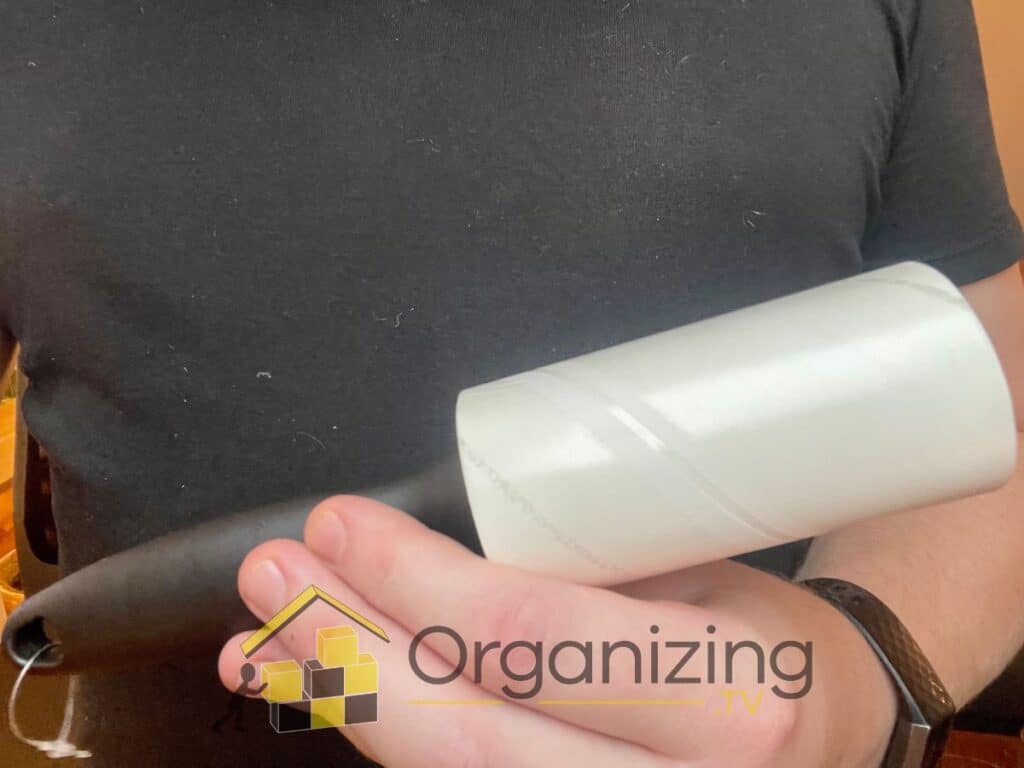
Lint rollers are the gold standard for removing lint from clothing. They’ve been around for decades and are easy to use, highly effective, and inexpensive.
Lint rollers are manual tools similar to a mini rolling pin, and they have strong adhesive tape on the rolling barrel. To use it, simply roll it over the pilling, and the loose fibers will stick to the barrel.
A downside to lint rollers is that they lose their adhesive properties quickly. However, they’re very inexpensive, and you can buy them in bulk. Lint rollers are widely available at grocery stores, discount stores, online, and more.
Scotch-Brite Lint Roller from Amazon is an excellent example of a lint roller. It comes in a pack of 5 and has 70 sheets per roller, allowing you to use each roller multiple times.
2. Sweater Stone
No products found.
A sweater stone is a useful tool for removing pilling on your clothes. The stone’s porous surface attracts loose fibers and pulls them off the fabric. You can pick up a sweater stone at most department stores or online.
To use a sweater stone, hold in in your dominant hand and run it gently over your clothing. The pilling will quickly come off, leaving you with a smooth and pill-free garment.
It’s also reusable, chemical-free, and safe for all fabrics. So if you’re looking for a quick and simple way to get rid of pilling on your clothes, a sweater stone is a great choice.
While it may sound like an unusual pill removal tool, the sweater stone has many benefits:
- It’s easy to use
- It’s highly effective (some people claim it can reduce pilling by up to 80%)
- It’s inexpensive (don’t expect to pay more than $10 for one)
A sweater stone has many other cleaning uses. It’s a handy tool for cleaning suede, leather, and other fabrics prone to pilling.
3. Fabric Shaver or Razor
- [LED DIGITAL DISPLAY] – IRUNTEK fabric shaver using high-tech LED display, can be seen clearly of the battery power and speed gear on the screen, battery power from 0-100, when the digital dispaly below 10, it need recharged, convenient and intuitive.(Tip: Please use a 5V 1A charging head for charging)
If the above method doesn’t seem to work, you can also try using a fabric shaver. This handy cleaning tool is specially designed for removing pills from fabrics and looks like a small handheld razor.
Fabric shavers are often electric, like the iRUNTEK Rechargeable Fabric Shaver from Amazon. It has received thousands of excellent reviews and can remove even the most stubborn pilling in one application.
All you need to do is glide the shaver across your fabric to remove loose threads.
Fabric shavers are particularly useful for removing pilling on delicate fabrics such as silk and nylon. They’re also great for restoring swimsuits and underwear to like-new condition and are most effective on fabrics with short fibers.
Unfortunately, they’re less effective on fabrics with long fibers, such as wool.
You can also use them to shave off the fuzz and loose threads on items such as carpets, upholstery, and blankets.
If you need to remove pilling in a hurry, and you don’t have a pill removal tool handy, you could always use a regular razor instead. However, you should opt for a new and sharp razor, as this will be more effective at removing the loose fibers.
4. Sticky Tape
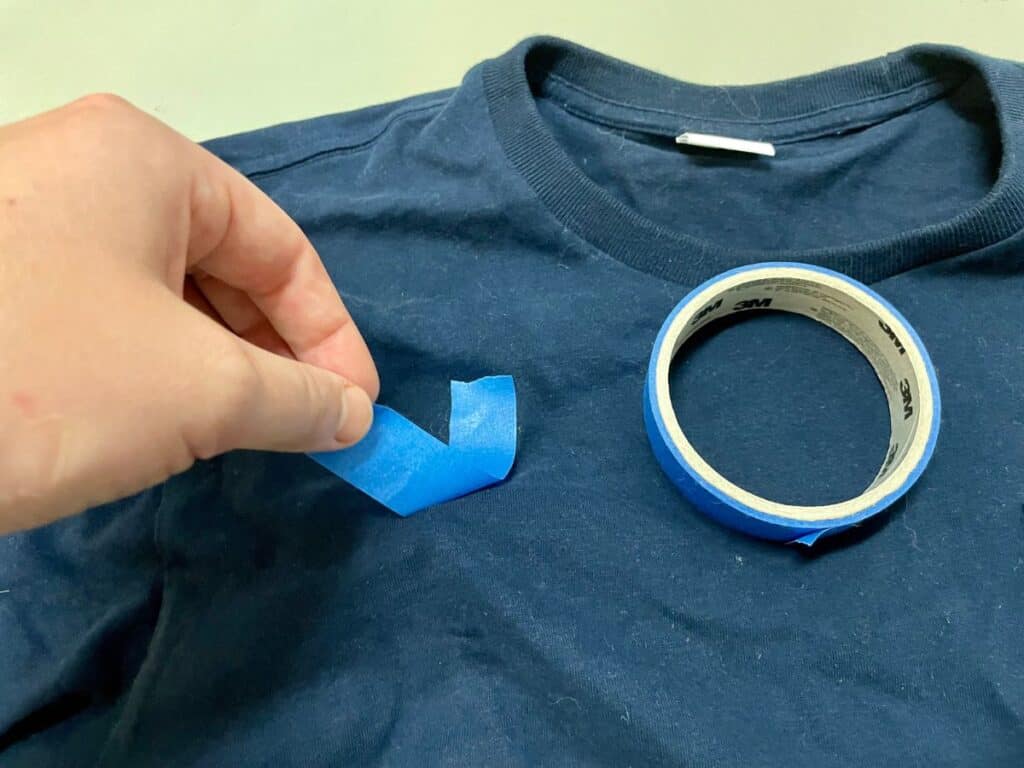
Lint rollers are effective because the rolling barrel is covered in adhesive tape. If you don’t have a lint roller but have some double-sided or sticky tape lying around, you can use it to remove pilling from your clothing.
You can apply the sticky tape to your clothing directly and then pull it off, or you could make your own large lint roller by covering a rolling pin with double-sided tape.
5. Pumice Stone
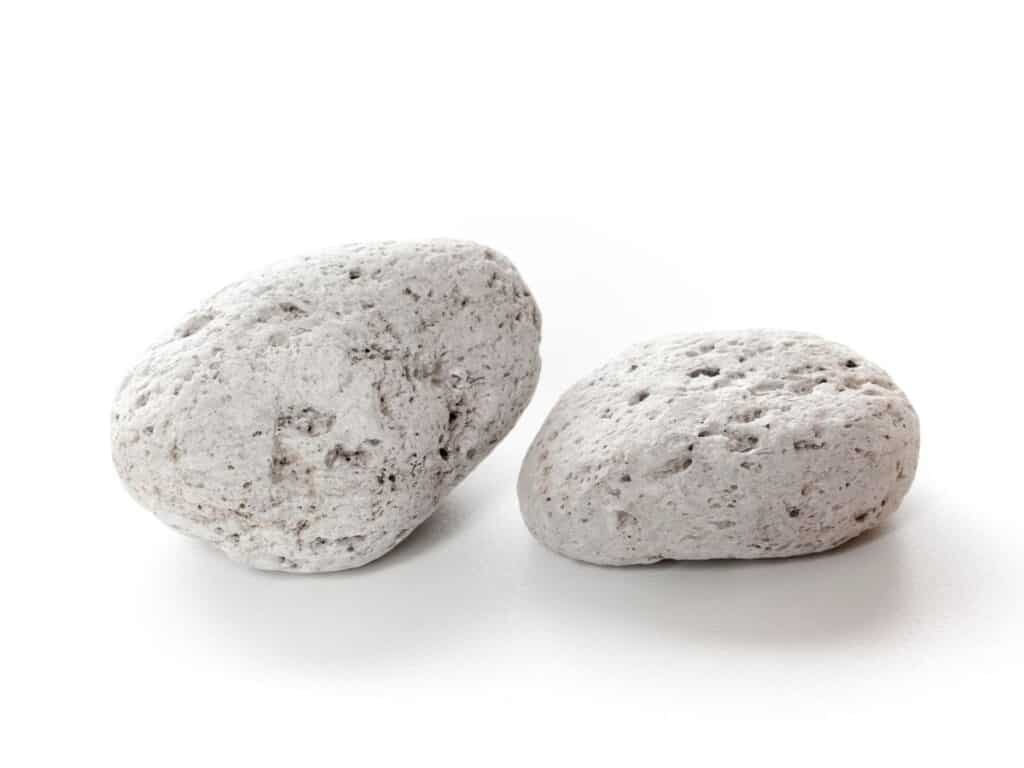
A pumice stone is a type of porous stone that is often used in foot spas, but it also makes a fantastic cleaning tool and can easily remove pilling from clothing, furniture, carpet, and more.
Here’s how to use a pumice stone for removing pilling:
- Soak the pumice stone in tepid water for 10 minutes. This will ensure that it won’t damage your clothing when you use it.
- Rub it over the fabric’s surface to pull the loose threads off.
- Repeat the process if still some pills remain.
Many people prefer a pumice stone to a sweater stone because it’s gentler on fabrics. It’s particularly effective on fabrics prone to pilling, such as wool and nylon.
You can find pumice stones at most department stores, pharmacies or online. They’re a cheap and effective way to get rid of pilling on your clothes. In addition, you can use the pumice stone for other things instead, such as:
- Removing dry skin from your feet
- Getting rid of limescale or stubborn dirt build-up on hard household surfaces
If you plan on doing this, be sure to clean it before using it on your clothes.
How To Prevent Pilling on Clothes
Now that I’ve discussed the most effective ways of removing pilling from clothes, I can explain how to prevent it so you don’t have to deal with it in the future:
1. Wash Your Clothes Inside Out
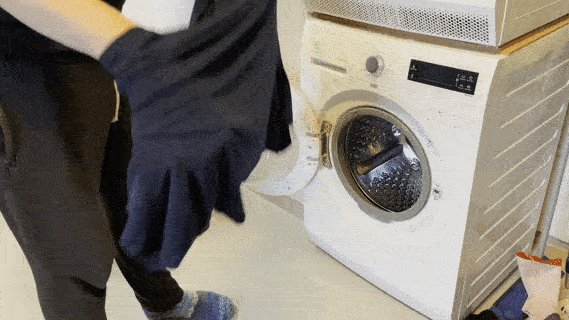
Washers use agitation to clean the laundry effectively. Unfortunately, this agitation can cause the delicate fibers to loosen, resulting in pilling. Thankfully, you can easily prevent this by washing your clothing inside out.
Washing your clothing inside out may cause pilling on the fabric’s inner surface but it won’t make the garment look unsightly when you wear it. Make it a habit to turn your clothes inside out before washing them.
2. Use a Washing Gentle Program with Cold Water
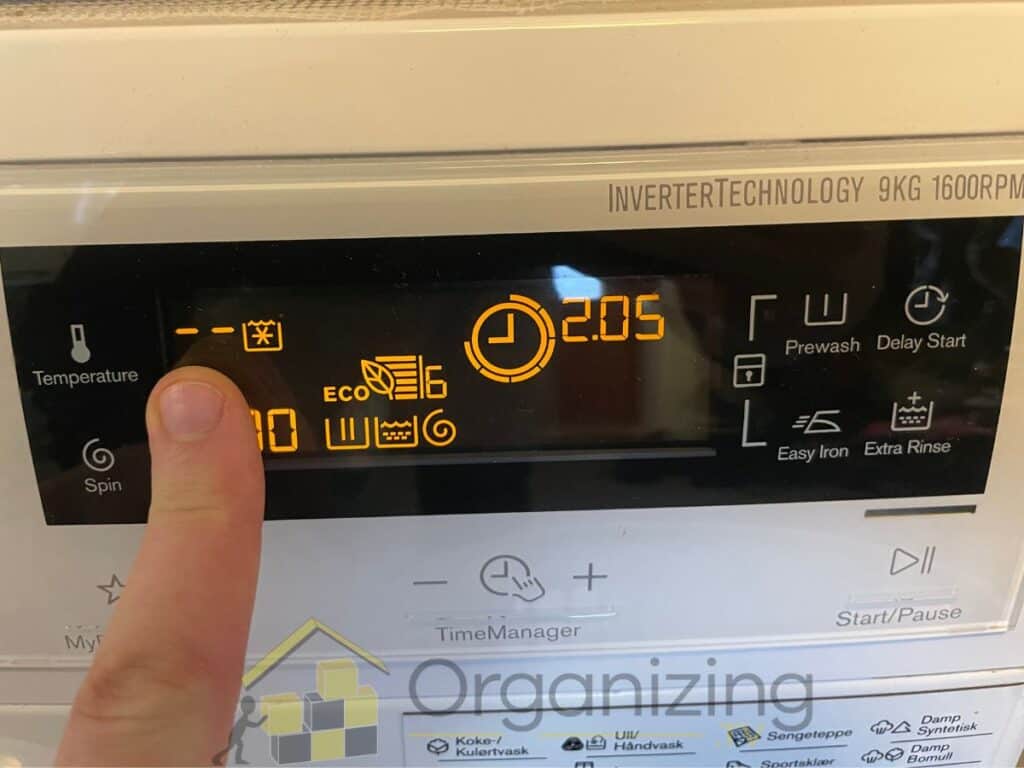
If you want to prevent pilling from the get-go, you need to choose the right washer settings. Luckily, there are some simple washer settings you can use to help prevent pilling:
- Check the care label on the clothing. Different fabrics require different settings, so it’s important to follow the instructions on the label.
- Select a gentle cycle with low or no spin. This will help keep the fabric from being agitated too much, which can cause pilling.
- Use a low-temperature setting and a mild detergent. High temperatures and harsh detergents can worsen pilling.
- Use a mesh bag when washing delicate items . This will help protect the fabric from getting caught on zippers, sequins, and other damaging items in the washer.
It’s also a good idea not to overload your washer. Load the washer according to the manufacturer’s instructions, and make sure the clothes have plenty of room to move around. This will prevent them from rubbing against each other and forming pills.
Hot water causes the fibers to break down and weaken, which makes them more prone to pilling.
Instead of using a gentle program on your washer, you could always hand wash your clothes to prevent pilling. Hand washing is a simple but effective way to clean your clothes without worrying about damage. When done correctly, it can not only help keep your garments looking new but also help preserve their color and fabric quality.
All you need is:
- Sink or a bucket of water
- A few drops of detergent or soap
- A soft scrubbing brush
To hand wash your clothes:
- First, add water and detergent or soap to your sink or bucket.
- Then, submerge your clothes in the water, leave them to soak, and gently scrub them with the brush.
- After you’re done scrubbing, rinse the clothes in clean water and hang them to dry.
More on hand washing your clothes here.
3. Use a Gentle Laundry Detergent
When it comes to detergent, you should look for one that’s designed for the clothing you’re washing. Biological or enzymatic laundry detergents are highly effective at removing stains but try and use these detergents only when necessary, as they’re harsher than non-biological detergents.
When shopping for detergent, look for products marked specifically for preventing pilling. If possible, also opt for a detergent that’s free of harsh chemicals, so you can be sure it won’t damage your clothes.
Using a fabric softener can also help because it conditions the clothing’s fibers, making them less likely to pill.
4. Separate Your Clothing During Washing and Drying
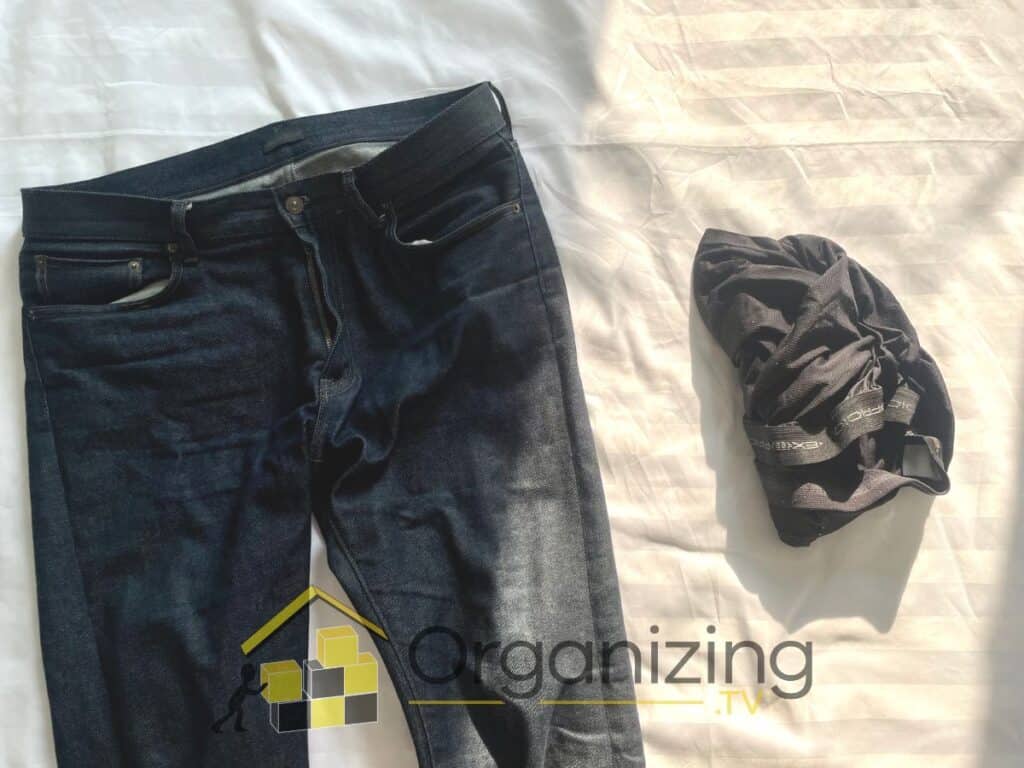
Pilling happens when small balls of fabric appear on the surface of a garment and is caused by friction between two pieces of fabric. When washing and drying clothes in a machine, it’s important to separate them based on the fabric type.
For example, jeans should be washed and dried separately from fleece, as the two fabrics can cause friction and lead to pilling. Additionally, clothes should be kept away from zippers, sharp buttons, and other rough areas; these can create more friction and accelerate the pilling process.
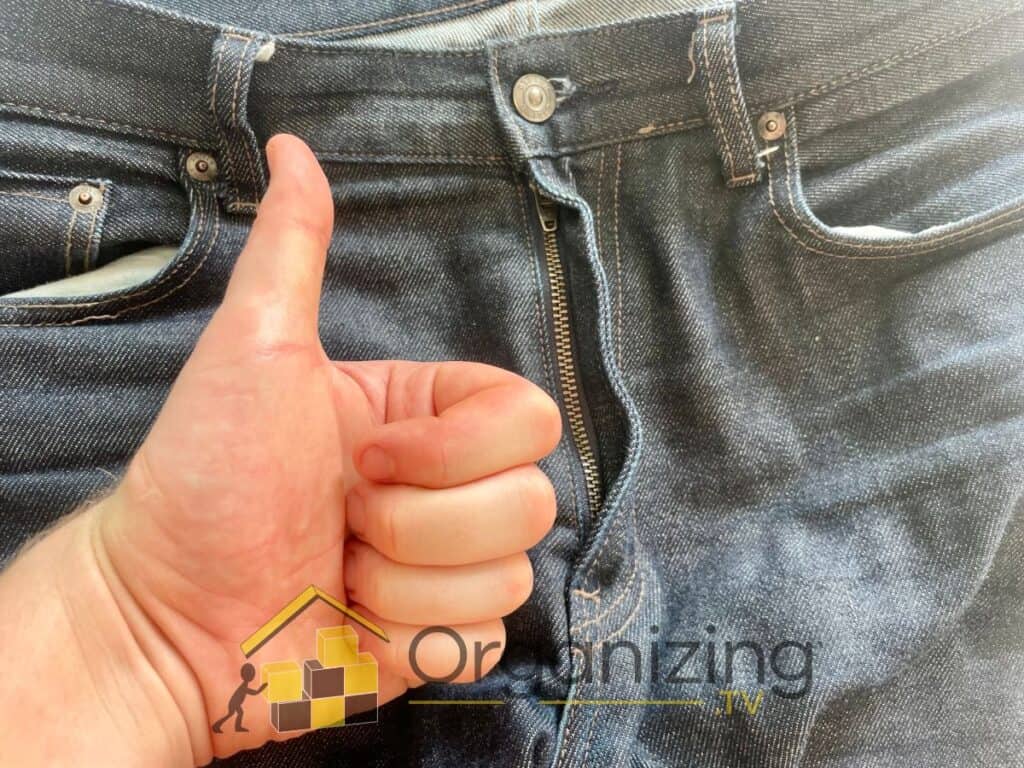
When drying clothing in a dryer, consider reducing the drying temperature or using a fabric softener, which will soften the fibers and make them less likely to pill.
Finally, it’s important to remove your clothes from the dryer as soon as they’re done, as this will reduce the risk of the fibers becoming tangled.
5. Air-Dry Your Clothes If You Can
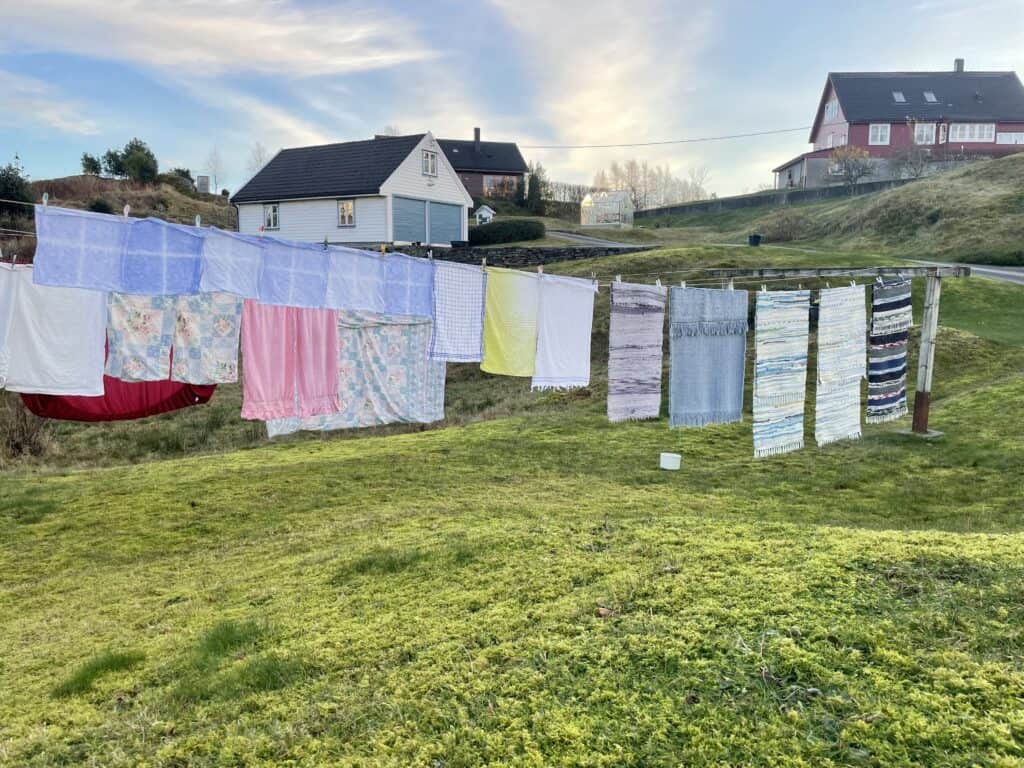
Air drying your clothes is the most effective way to ensure that they don’t get those pesky little pills that ruin the look of your clothes. It’s also the most energy-efficient way to dry your clothes since you don’t need to use any electricity or gas.
Air drying also helps to preserve the fabric and keep it from fading since it isn’t exposed to the high temperatures of a dryer.
The best way to air dry your clothes is to hang them on a clothesline in direct sunlight. The sunlight helps to break down any dirt and bacteria, while the breeze helps to dry the clothes quickly, and without any damage.
Of course, if you don’t have access to a clothesline, you can also hang your clothes indoors. Just make sure to keep them away from heat sources, like radiators or fireplaces. And ensure the area is well-ventilated to prevent dampness and mold.
What Is Pilling?
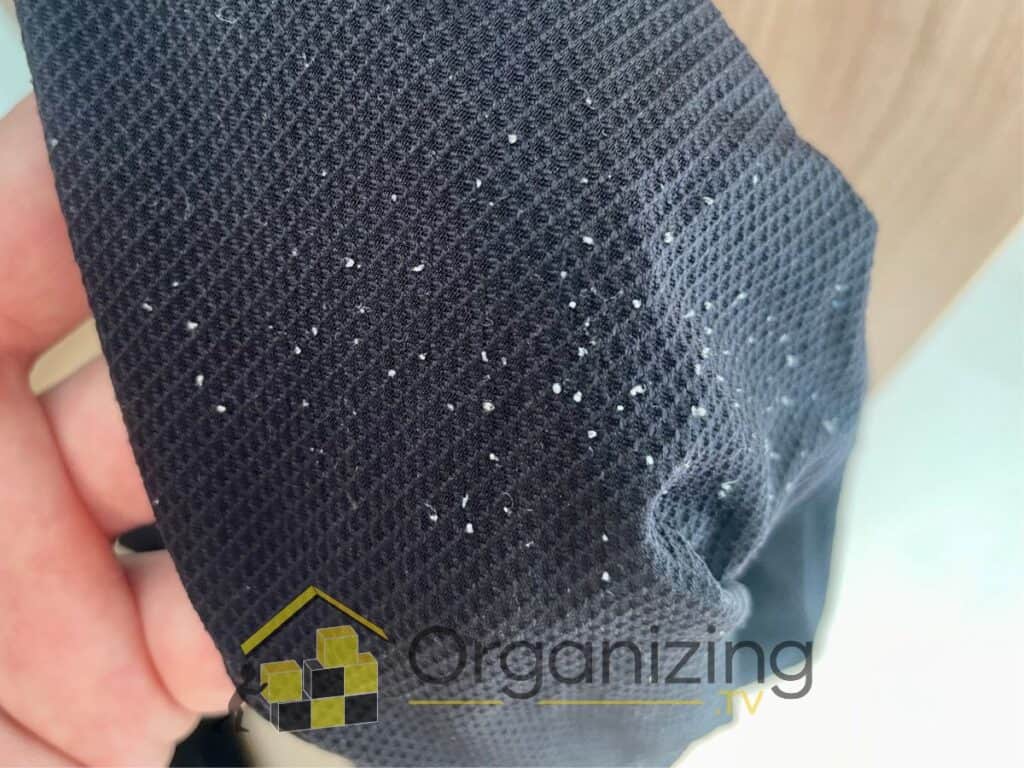
Pilling is the formation of small balls of fabric on a garment’s surface. It is caused by the breakdown of the textile’s fibers, and it’s more common in certain fabrics than others. Most fabrics will pill to some extent, but the following fabrics are particularly notorious for pilling.
- Wool is the most common fabric that pills. It tends to pill more quickly on the cuffs and hems of sweaters.
- Polyester and acrylic fabrics such as fleece, sweatshirts, and cashmere sweaters also tend to pill.
- Nylon fabrics such as swimsuits, underwear, socks, and stockings are also prone to pilling.
A fabric’s weave also plays an important role in the likelihood of pilling. Woven fabrics are less susceptible to pilling than knitted fabrics.
Pilling happens when wearers pull at their clothing or when fabric rubs against itself. Excessive washing can also speed up the pilling process, as the friction of rubbing against each other can cause fabrics to break down.
Conclusion
Pilling is a real problem when it comes to clothing. Luckily, there are multiple effective ways to remove pilling, including using a:
- Lint roller
- Sweater stone
- Fabric shaver or regular razor
- Sticky or double-sided tape
- Pumice stone
You can prevent pilling by washing your clothes inside out, choosing a gentle washing program, and using cold water. Avoid washing and drying your pilling-prone clothing with items that have zippers or sharp buttons, and air-dry your clothes, if you can.
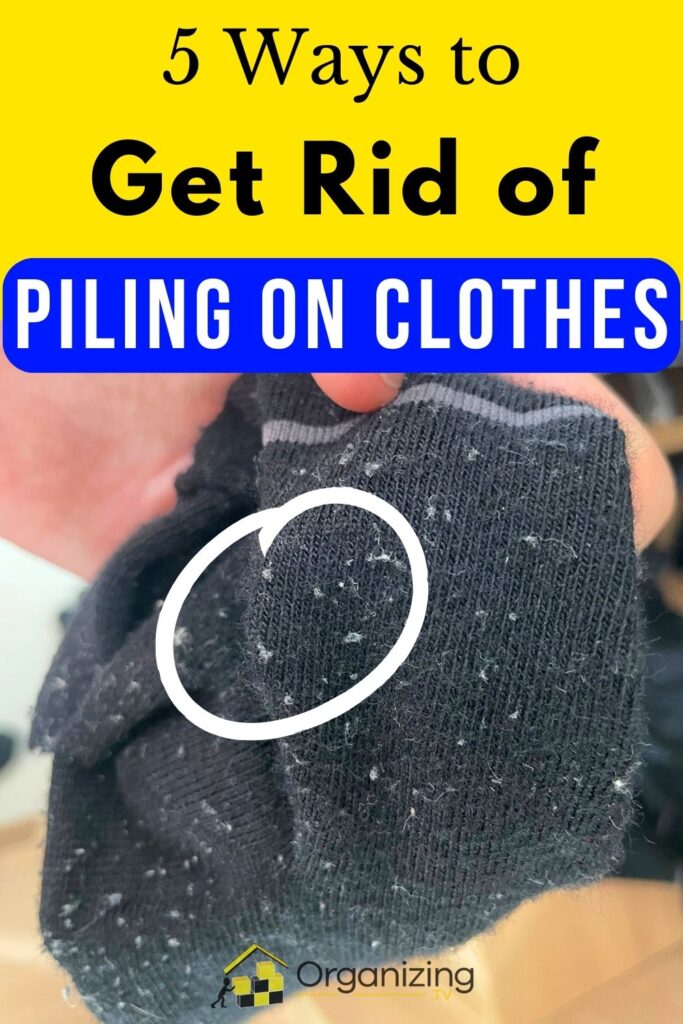

I’m an expert wardrobe organizer and a bit of a clean freak. I created this website and its YouTube channel to share practical guides about laundry and organizing. My teachings have been featured in multiple large news publications, and I’ve self-published two wardrobe organizing books and an entire course on the subject.


